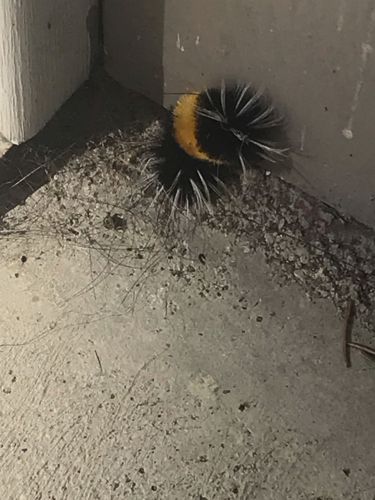Banded Woolly Bear Caterpillar
Scientific Name: Pyrrharctia isabella
Order & Family: Lepidoptera (Moths and Butterflies), Erebidae (Tiger Moths and allies)
Size: 2-5 cm (0.8-2 inches) in length as a caterpillar.

Natural Habitat
Widely distributed across North America, found in diverse habitats including gardens, fields, woodlands, meadows, and urban areas. They are often encountered on the ground or low vegetation.
Diet & Feeding
Mostly herbaceous plants, including dandelions, plantain, clover, sunflowers, and various garden vegetables. They are not considered significant agricultural pests.
Behavior Patterns
Woolly bear caterpillars typically overwinter as larvae, often under bark, rocks, or leaf litter. They can survive freezing temperatures due to a natural 'antifreeze' (glycerol) in their bodies. In spring, they emerge, feed, and then pupate, eventually transforming into Isabella Tiger Moths. They are often seen crawling rapidly in the fall, seeking overwintering sites.
Risks & Benefits
Potential Risks: The hairs (setae) of woolly bear caterpillars are generally not venomous but can cause mild skin irritation or allergic reactions in sensitive individuals if handled excessively. They are not known to bite or sting. Potential Benefits: As generalist herbivores, they contribute to the decomposition cycle by consuming plant matter. The adult moths serve as a food source for birds, bats, and other insectivorous animals, playing a role in the food web.
Identified on: 8/24/2025